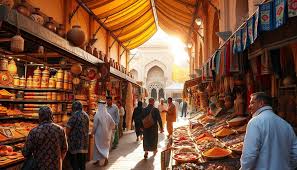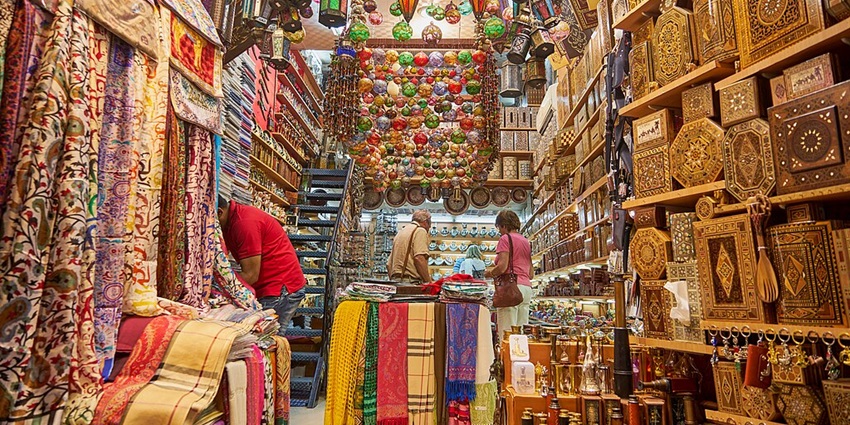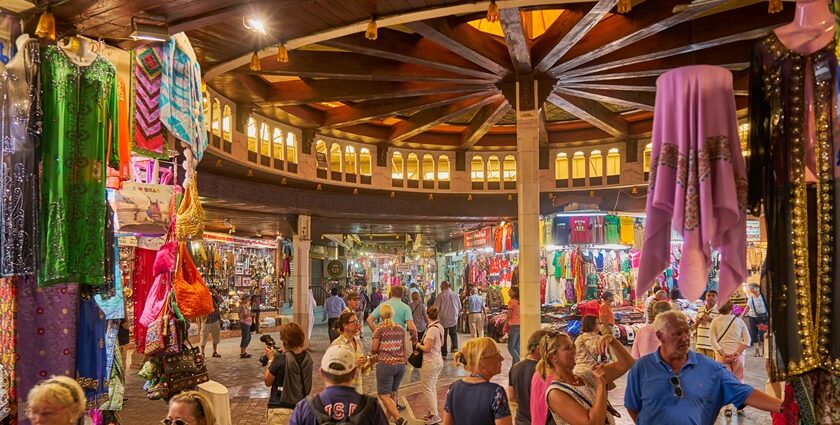Omani Souqs
Omani souqs are more than just marketplaces they are living expressions of Oman’s culture, tradition, and everyday life. Wandering through these bustling streets offers visitors an immersive experience into the heart of the country, revealing its rich heritage through sights, sounds, and scents. From the aromatic spice stalls to the colorful textiles, each souq tells a story of craftsmanship, trade, and local customs that have been preserved over centuries.
Souqs serve as both social and economic hubs, bringing together traders, shoppers, and tourists. Unlike modern shopping malls, these traditional markets are deeply rooted in human connection, where bargaining is part of the interaction, and the atmosphere pulses with energy and excitement. For anyone seeking to understand Oman beyond its stunning landscapes, exploring its souqs is a perfect introduction.
Historical Significance of Souqs in Oman
Omani souqs have existed for centuries, reflecting the country’s position as a historic trading hub in the Arabian Peninsula. Merchants from India, Africa, and Persia historically converged here, bringing spices, textiles, pearls, and other goods that enriched the local economy and culture. These interactions shaped the unique character of Omani markets, blending external influences with traditional Omani artistry.
Walking through a souq, one can still sense echoes of the past. Ancient alleyways and wooden stalls tell stories of generations of traders who have preserved their heritage. Each corner holds a piece of history, from the craftsmanship displayed in silver jewelry to the intricate patterns of handwoven fabrics. For locals, the souq is a reminder of their ancestors’ resilience and ingenuity, keeping tradition alive in the modern world.
Experiencing the Colors and Aromas
One of the most captivating aspects of Omani souqs is the sensory experience. Vibrant colors fill every corner—from bright spices like saffron and turmeric to hand-dyed fabrics in rich hues. The air is often infused with the aroma of frankincense, dried herbs, and fresh produce, creating a multisensory journey that leaves a lasting impression on every visitor.
Walking past spice stalls, one can witness the careful packaging of fragrant mixtures, each blend representing recipes passed down for generations. Fruit vendors display fresh seasonal offerings, while artisans arrange their goods meticulously, reflecting pride in their work. These colors and aromas are not just decorative they carry cultural significance, symbolizing Omani hospitality, creativity, and attention to detail.

Traditional Crafts and Handicrafts
Omani souqs are treasure troves of traditional crafts that demonstrate the skill and creativity of local artisans. Visitors can discover intricately carved wooden boxes, handwoven baskets, pottery, and delicate silver jewelry, all crafted using time-honored techniques. These items are not merely souvenirs they are living evidence of Oman’s artistic heritage.
Many artisans operate within family businesses, teaching younger generations to continue the craft. This preservation of traditional skills ensures that each item carries a story, connecting the buyer to centuries of cultural expression. Whether it’s a khanjar (Omani dagger) or a beautifully embroidered dishdasha, each craft is a testament to the pride and identity of the Omani people.
Social Interaction and Community Life
Souqs are social spaces where people come together, strengthening community bonds. It’s common to see locals chatting over tea, sharing news, or negotiating prices with a friendly smile. The interactions go beyond commerce] they reflect respect, trust, and mutual understanding.
Visitors often find themselves drawn into these interactions, experiencing a more personal and human side of Oman. The warmth of the vendors and the welcoming atmosphere create a sense of belonging, even for those new to the country. These markets are living classrooms where one can learn about local etiquette, customs, and values through everyday encounters.
The Role of Food in Souqs
Food is at the heart of Omani souqs, offering an authentic taste of local flavors. Traditional dishes, spices, and sweets are abundant, allowing visitors to experience the richness of Omani cuisine. Stalls selling dates, halwa, nuts, and fresh seafood provide not just nourishment but also a connection to the land and its bounty.
Tasting food at a souq is an experience in itself. The preparation often happens in front of you, showcasing techniques passed down through generations. Street food vendors serve delicacies like shuwa, a slow-cooked spiced meat, or samosas with perfectly balanced flavors. Each bite offers insight into Omani traditions, family recipes, and the cultural significance of sharing meals in daily life.
Seasonal and Special Markets
Throughout the year, Omani souqs transform to reflect seasonal festivities and religious celebrations. During Eid or the Sultan’s birthday, souqs are decorated, and special goods become available, attracting both locals and tourists. These markets offer unique items, including festive clothing, ceremonial incense, and celebratory sweets.
Special markets often highlight regional specialties, allowing visitors to explore products unique to different parts of Oman. For example, the coastal towns offer fresh seafood and dried fish, while the desert regions showcase handcrafted jewelry and textiles made from camel and goat hair. This seasonal variation keeps the souqs dynamic and continually engaging for those who return regularly.

Tourism and Cultural Exchange
Omani souqs play a crucial role in cultural exchange, allowing visitors to engage directly with local traditions. Tourists often come to purchase souvenirs, but they leave with far more insights into Omani life, history, and values. This exchange is mutually beneficial: it provides economic support to artisans and vendors while fostering greater understanding and appreciation of Oman’s heritage.
Guided tours and interactive experiences have become popular in many souqs, where visitors can learn about traditional crafts, participate in cooking demonstrations, or explore the history behind certain stalls. These initiatives enhance the visitor experience, creating memorable encounters that go beyond simple shopping.
Challenges and Modern Adaptations
While Omani souqs are treasured cultural spaces, they face challenges from modernization and global retail chains. Some traditional markets have had to adapt, incorporating modern amenities or expanding their product range to appeal to a broader audience. However, these adaptations have been careful not to compromise the authenticity of the experience.
Many souqs now balance tradition and convenience, offering air-conditioned areas, better signage, and organized pathways, making it easier for visitors to navigate. At the same time, vendors continue to uphold traditional practices like bargaining, handcrafting, and personal interaction, ensuring that the essence of the souq remains intact.
Preserving Heritage for Future Generations
Preserving Omani souqs is essential not just for tourism but for cultural continuity. Initiatives by local authorities and community groups focus on maintaining the architecture, supporting artisans, and promoting traditional commerce. Schools and cultural organizations often collaborate with souqs to teach young Omanis about their heritage, instilling pride and awareness of local craftsmanship.
By valuing these markets, Oman ensures that its cultural identity remains vibrant in a rapidly changing world. Visitors benefit as well, experiencing a form of tourism that is immersive, authentic, and deeply human. The souqs become living museums where heritage, commerce, and social life intersect seamlessly.
Conclusion
Omani souqs offer more than shopping they provide a window into local life, history, and culture. The vibrant colors, tantalizing aromas, skilled craftsmanship, and warm social interactions create a rich tapestry that reflects Oman’s identity. Each visit to a souq allows one to connect with the people, traditions, and stories that make the country unique.
Exploring these markets is a journey of discovery, providing experiences that linger long after one leaves. Souqs celebrate the essence of human connection, resilience, and creativity, making them an indispensable part of Oman’s cultural landscape. For travelers and locals alike, they are not just marketplaces they are gateways to understanding the heart and soul of Oman.
Do follow Gulf Magazine on Instagram.
Also Read – Reviving Oman’s Timeless Fishing Traditions: A Deep Dive into Sustainable Practices



